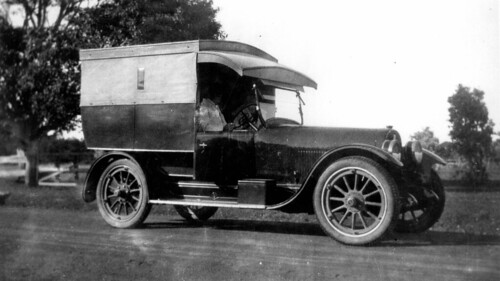In the fast-paced world of automotive sales, where competition is fierce and consumers have become more discerning than ever, businesses must make a lasting impression. With the rise of online car shopping, prospective buyers rely heavily on images to make their purchasing decisions.
That’s where 360-degree Car Image Editing comes in. This innovative technology allows automotive businesses to showcase their vehicles from every angle, providing potential customers with a virtual test drive experience.
By incorporating 360-degree images into their online listings, automotive businesses can offer a more immersive and interactive viewing experience. This not only captures the attention of potential buyers but also instills a sense of trust and transparency in the brand. From the exterior to the interior, customers can explore every detail of the car, giving them a comprehensive understanding of the vehicle’s condition.
Furthermore, 360-degree car image editing is a game-changer in terms of conversion rates. Studies have shown that listings with interactive visuals have significantly higher engagement and conversion rates compared to traditional static images. By allowing customers to engage with the product, automotive businesses can increase their chances of closing a sale.
In today’s digital landscape, where visual content reigns supreme, 360-degree car image editing has become an essential tool for automotive businesses looking to stay ahead of the competition and drive more sales.
Table of Contents
ToggleHow 360-degree car image editing works
360-degree car image editing involves capturing a sequence of images from all angles around the vehicle and then seamlessly stitching them together to create a panoramic view. Specialized cameras or rigs equipped with multiple cameras are used to capture the images, ensuring that every angle is covered. Once the images are captured, they are processed using advanced software that aligns and blends the images, creating a smooth and seamless transition.
The resulting 360-degree image can then be embedded into online listings, allowing potential buyers to interact with the image and explore the vehicle from any angle. Some software even allows for additional features such as zooming in on specific areas of the vehicle, providing a closer look at the interior or exterior details. This level of interactivity enhances the customer experience and helps to build trust and confidence in the product.
Examples of businesses benefiting from 360-degree car image editing
Many automotive businesses have already embraced 360-degree car image editing and are reaping the benefits. One such example is a leading online car marketplace that saw a significant increase in user engagement and conversion rates after incorporating 360-degree images into their listings. The ability of potential buyers to explore the vehicles from every angle gave them a sense of control and confidence in their purchasing decisions.
Car dealerships have also seen positive results from using 360-degree car image editing. By giving customers the ability to virtually walk around the vehicle and examine every detail, dealerships have seen an improvement in customer satisfaction and trust. Potential buyers are more likely to visit the dealership for a test drive when they have already had a virtual test drive experience through 360-degree images.
Choosing the right software for 360-degree car image editing
When considering 360-degree car image editing, automotive businesses need to choose the right software that meets their specific needs. There are several factors to consider when selecting a software solution.
Firstly, the software should offer seamless stitching and blending capabilities to ensure a smooth and natural transition between images. This is crucial for providing a realistic and immersive viewing experience for potential buyers. Additionally, the software should have advanced editing tools that allow for enhancing and retouching the images, ensuring that the vehicles are presented in the best possible light.
Integration with existing platforms and websites is another important consideration. The chosen software should have the ability to easily embed 360-degree images into online listings, making it convenient for businesses to showcase their vehicles to potential buyers. Compatibility with various devices and browsers is also essential to ensure a seamless viewing experience across different platforms.
Lastly, the software should offer comprehensive analytics and reporting features. This allows businesses to track user engagement, conversion rates, and other important metrics to measure the effectiveness of their 360-degree car image editing strategy. Armed with these insights, businesses can make data-driven decisions to optimize their listings and improve their overall sales performance.

Best practices for implementing 360-degree car image editing
To maximize the benefits of 360-degree car image editing, automotive businesses should consider the following best practices:
1. Capture high-quality images: Invest in high-resolution cameras or specialized rigs to capture detailed and sharp images. The quality of the images will significantly impact the overall viewing experience for potential buyers.
2. Highlight key features: When editing the 360-degree images, focus on highlighting the unique selling points and key features of the vehicle. This helps to attract the attention of potential buyers and differentiate the listing from competitors.
3. Optimize loading times: Large file sizes can slow down the loading times of 360-degree images, leading to a poor user experience. Optimize the images for web viewing to ensure fast and smooth loading across different devices and internet connections.
4. Provide additional information: Supplement the 360-degree images with comprehensive vehicle information such as specifications, features, and condition reports. This provides potential buyers with the necessary details to make an informed purchasing decision.
5. Test and iterate: Continuously monitor the performance of the 360-degree car image editing strategy and make adjustments as needed. Test different angles, image formats, and additional features to optimize user engagement and conversion rates.
Common challenges and solutions in 360-degree car image editing
While 360-degree car image editing offers numerous advantages, there are some common challenges that businesses may face. One challenge is the complexity of the editing process, especially for businesses that are new to this technology. However, many software solutions offer user-friendly interfaces and tutorials to help businesses navigate the editing process.
Another challenge is the need for specialized equipment and software, which can be costly for small businesses. However, there are affordable options available in the market that still provide high-quality results. Alternatively, businesses can consider outsourcing their 360-degree car image editing to specialized service providers, which can be a cost-effective solution.
Outsourcing vs in-house 360-degree car image editing
The decision to outsource or handle 360-degree car image editing in-house depends on various factors such as budget, expertise, and workload. For large automotive businesses with a high volume of vehicles to list, it may be more cost-effective to invest in the necessary equipment and software and build an in-house team. This allows for more control and flexibility in the editing process.
On the other hand, small businesses with limited resources may find it more practical to outsource their 360-degree car image editing. Outsourcing allows businesses to leverage the expertise of professionals who specialize in this field, ensuring high-quality results without the need for significant upfront investment. It also frees up internal resources to focus on other core business activities.
Potential ROI of 360-degree car image editing
The return on investment (ROI) of 360-degree car image editing can be significant for automotive businesses. By providing potential buyers with a more immersive and interactive viewing experience, businesses can attract more qualified leads and increase conversion rates. Additionally, the transparency and trust instilled by 360-degree images can result in higher customer satisfaction and repeat business.
Furthermore, the time and cost savings achieved through streamlined image capture and editing processes can contribute to the overall ROI. By reducing the need for multiple photo shoots and manual editing, businesses can allocate resources more efficiently and focus on other revenue-generating activities.
FAQs for 360-degree Car Image Editing
1. What is 360-degree car image editing?
360-degree car image editing is the process of enhancing and retouching car images taken from various angles to create a complete view of the vehicle. It involves editing the images to ensure consistency in lighting, color, and perspective, resulting in a seamless and visually appealing 360-degree view of the car.
By utilizing advanced editing techniques, professionals can remove any imperfections, adjust shadows and highlights, and enhance the overall appearance of the vehicle to make it more enticing for potential buyers or viewers.
2. Why is 360-degree car image editing important?
360-degree car image editing is essential for automotive businesses, dealerships, or online platforms that want to showcase their vehicles effectively. High-quality, professionally edited 360-degree car images can significantly impact customers’ perceptions and increase the chances of making a sale.
With 360-degree car image editing, you can present your vehicles in the best possible light, highlighting their features and attracting potential buyers. It allows customers to have a comprehensive view of the car’s exterior and interior, creating a more immersive and engaging experience.
3. What techniques are used in 360-degree car image editing?
The techniques used in 360-degree car image editing may vary depending on the specific requirements and desired outcome. However, some common techniques include:
- Background removal and replacement
- Color correction and enhancement
- Shadow and reflection creation
- Perspective correction
- Object removal or addition
- Image retouching and enhancement
These techniques are applied meticulously to ensure that the final result looks natural and visually appealing, providing an accurate representation of the car.
4. Can you edit 360-degree car images taken from different angles?
Yes, 360-degree car image editing can be done regardless of the angles from which the images are captured. Skilled editors can work with images taken from various angles and seamlessly edit them to create a consistent 360-degree view of the car.
Using advanced editing techniques, professionals can align the images, adjust the perspective, and ensure that the lighting and colors are consistent throughout the entire 360-degree view. This way, customers can have a comprehensive and accurate representation of the car from all angles.
5. How can 360-degree car image editing benefit my business?
360-degree car image editing can benefit your business in several ways:
- Improved visual appeal: Professionally edited 360-degree car images are visually appealing and can attract more potential buyers or viewers.
- Better customer experience: Providing a comprehensive and immersive view of the car through 360-degree images can enhance the customer experience and increase engagement.
- Increased sales: High-quality car images can significantly impact customers’ perception, increasing the chances of making a sale.
- Competitive advantage: By presenting your vehicles in the best possible light, you can gain a competitive advantage over other businesses in the automotive industry.
Overall, investing in professional 360-degree car image editing can help boost your business’s online presence, attract more customers, and increase sales.
Conclusion: The future of automotive businesses with 360-degree car image editing
In today’s digital landscape, where visual content reigns supreme, 360-degree car image editing has become an essential tool for automotive businesses looking to stay ahead of the competition and drive more sales. By offering a more immersive and interactive viewing experience, businesses can capture the attention of potential buyers and build trust in their brands.
As technology continues to advance, we can expect further enhancements in 360-degree car image editing, such as integration with virtual reality (VR) and augmented reality (AR) platforms. This will enable even more realistic and engaging experiences for potential buyers, further revolutionizing the way automotive businesses showcase their vehicles online.
In conclusion, 360-degree car image editing is a game-changer for automotive businesses, providing them with a competitive edge in the digital marketplace. By embracing this technology and implementing best practices, businesses can enhance their online listings, increase conversion rates, and ultimately drive more sales. The future of automotive businesses lies in their ability to captivate and engage potential buyers through immersive visual experiences.










